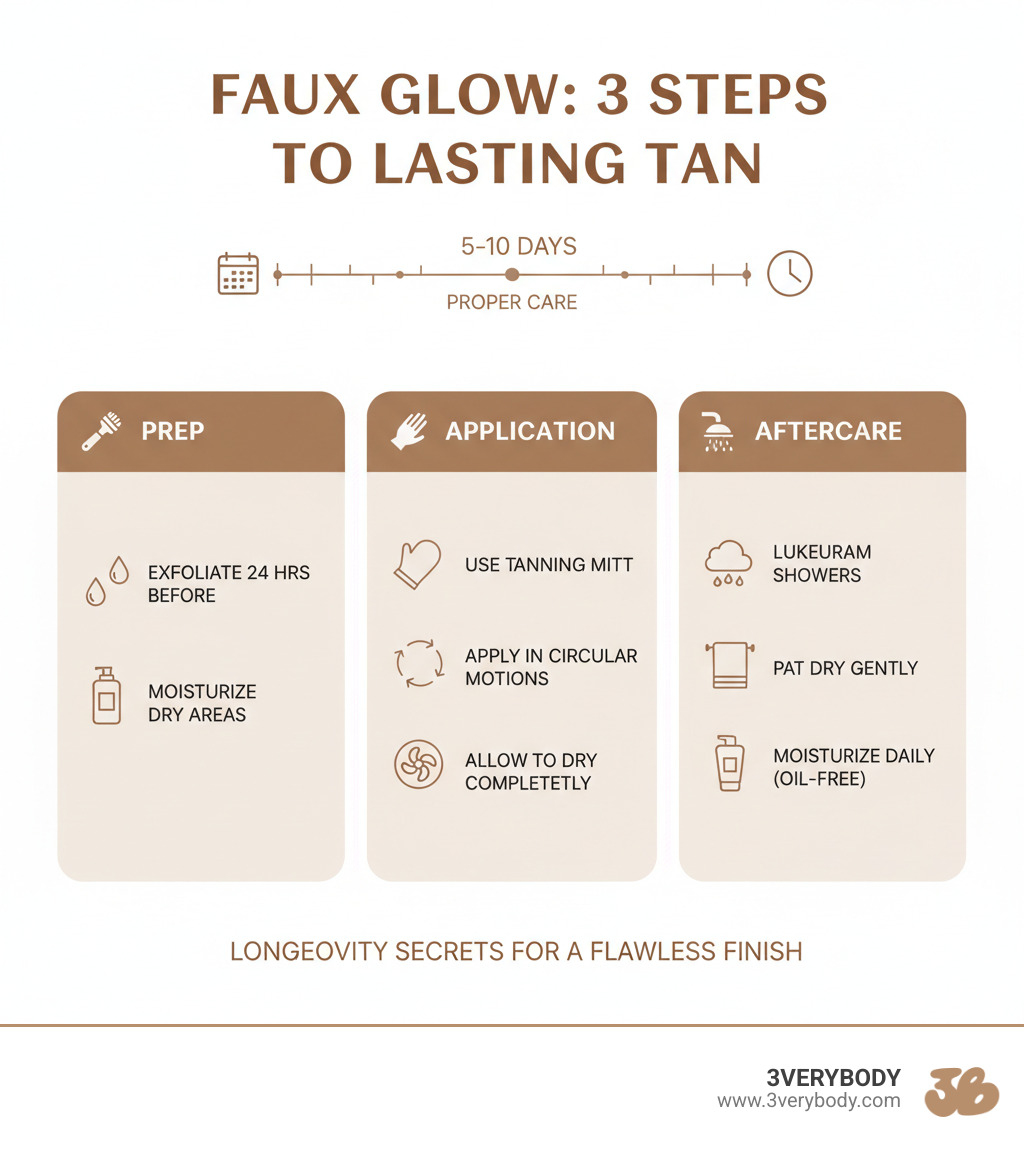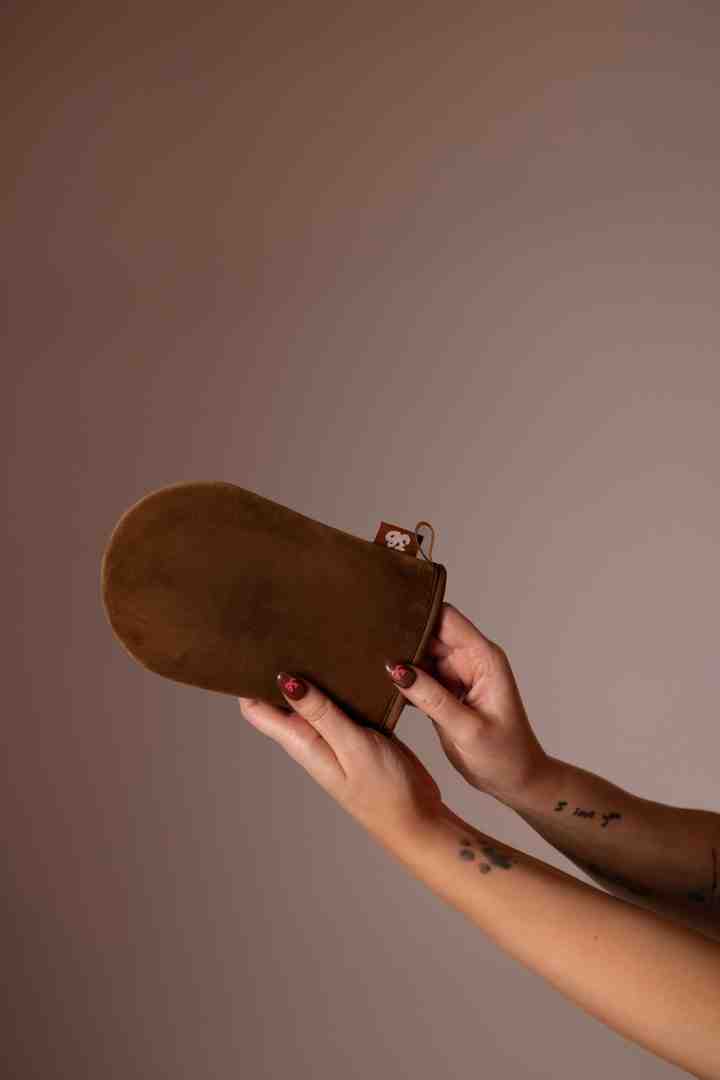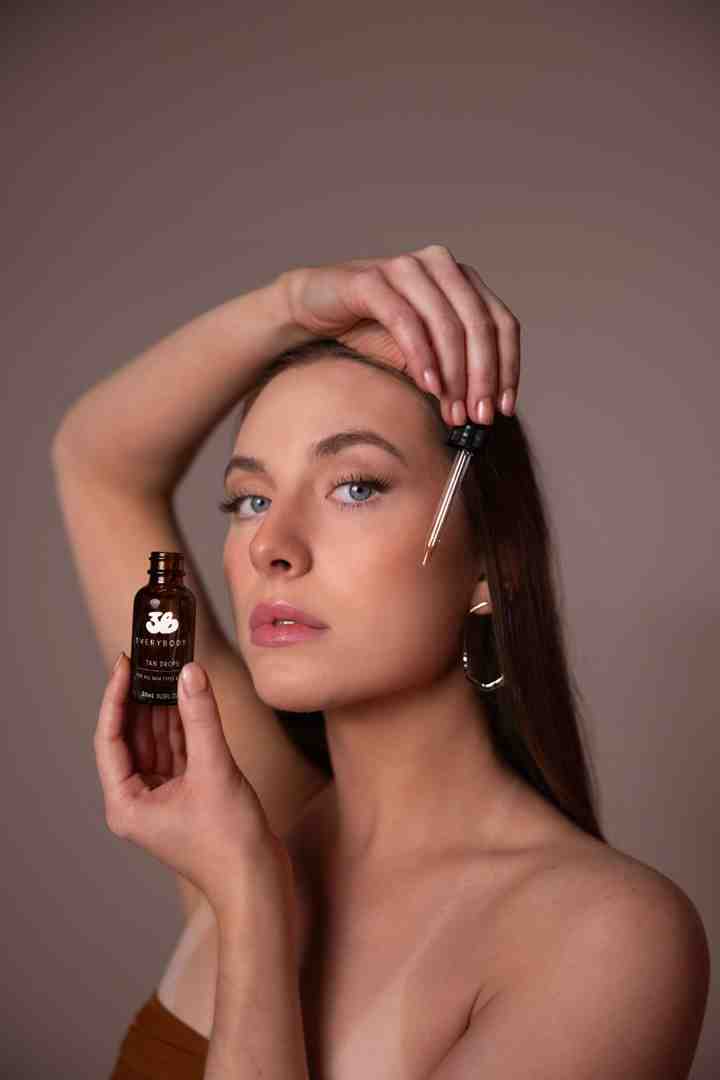Your Fake Tan's Shelf Life: A Comprehensive Guide
Wondering how long does fake tan last on skin? Discover expert tips for prep, application & aftercare to extend your glow.

Why Your Fake Tan's Lifespan Matters More Than You Think
How long does fake tan last on skin is one of the most common questions I get from customers, and for good reason. Nobody wants to invest time in a perfect glow only to watch it fade into patchy streaks after two days.
Here's the quick answer:
- Self-tanner duration: 5-10 days on average
- Spray tans: 7-14 days with proper care
- Key factors: Skin type, prep work, and aftercare routine
- Maximum longevity: Up to 10 days with the right approach
The truth is, most people accept that their tan will fade quickly because they think it's just "how self-tanner works." But after a decade of testing nearly every formula on the market (seriously, my apartment looked like a tanning lab), I finded that longevity isn't about luck—it's about understanding the science and following the right steps.
Your fake tan fades because of natural skin cell turnover, which happens every 7-10 days. The tanning ingredient DHA only affects the top layer of your skin, so as those cells shed, your color goes with them. But here's what most people don't know: you can dramatically slow down this process.
I'm Emmy, founder of 3VERYBODY, and I've spent years perfecting formulas that answer the question how long does fake tan last on skin with results that actually last. After watching my mom and grandma battle skin cancer, I became obsessed with creating safer tanning options that don't compromise on longevity or quality.

The Science of a Sunless Tan: Why It Fades
To truly understand how long does fake tan last on skin, let's dive into what's actually happening when you apply that golden glow. It all starts with a clever ingredient called Dihydroxyacetone, or DHA for short.
Here's where it gets interesting: DHA doesn't actually dye your skin like you might think. Instead, it creates a chemical reaction with the amino acids in your skin's outermost layer—the epidermis. This reaction is called the Maillard reaction (yes, the same process that makes your morning toast turn golden brown!).
When I first learned this, it completely changed how I thought about self-tanning. Your tan isn't a stain sitting on top of your skin—it's a temporary color change happening right in those surface cells.
But here's the catch: your skin is constantly renewing itself through a natural shedding process. Those tanned cells in your epidermis? They're programmed to flake off every 7-10 days as part of your body's normal skin cell turnover. As dermatologist Karan Lal, MD explains, DHA "binds to surface skin cells and causes a temporary darkening of your skin." You can learn more about the science behind DHA explained by dermatologist Karan Lal, MD to understand why this process is completely safe and FDA-approved.
This natural renewal is exactly why your beautiful bronze fades—and why skin hydration levels matter so much. When your skin is dry, those cells shed faster, taking your tan with them. It's like trying to hold onto autumn leaves in a windstorm.
Well-hydrated skin, on the other hand, holds onto those tanned cells longer. The cells shed more gradually and evenly, which means your tan fades gracefully instead of in patchy chunks. This is why the prep work and aftercare I'll share with you can literally add days to your glow—we're working with your skin's natural processes, not against them.
How Long Does Fake Tan Last on Skin?
Here's the honest answer to how long does fake tan last on skin: most self-tanners give you 5 to 10 days of gorgeous color. But here's what I've learned after years of formula testing—that range isn't random. It depends entirely on your skin type, the product you choose, and how well you care for your tan.
Your skin type plays a huge role in longevity. If you have naturally dry skin, you might find your tan fading closer to that 5-day mark because dry skin sheds faster. Oily skin tends to hold onto color a bit longer, often reaching that sweet spot of 7-10 days.
Then there are those lifestyle factors that can make or break your glow. Are you a daily gym-goer who loves long, hot showers? Your tan might fade faster. Do you spend weekends by the pool? Chlorine is basically kryptonite for fake tans. But if you're gentle with your skin and follow a good aftercare routine, you can absolutely push that timeline to the full 10 days.
The quality of your self-tanner makes a massive difference too. I've seen people get discouraged because their drugstore tan started peeling after three days, thinking that's just how all fake tans work. That's why we created 3VERYBODY—to prove that how long does fake tan last on skin doesn't have to be a guessing game.
How long does a self-tanner typically last?
Most self-tanners fall into that 5-10 day range, but the type of formula you choose can push you toward either end of that spectrum. Traditional lotions and mousses work beautifully, and our 3VERYBODY formulas are specifically designed to give you the longer end of that timeline—we're talking 7-10 days of even, natural-looking color.
Gradual tanners are my secret weapon for extending your glow. These contain lower concentrations of DHA, so you apply them every few days to build and maintain your color. Think of them as your tan's best friend—they keep that golden hue going strong while your original application naturally fades.
The biggest game-changer? Product quality. High-quality, alcohol-free self-tanners that are rich in skincare ingredients don't just give you better color—they actually help your tan last longer by keeping your skin hydrated and healthy. When your skin is happy, it holds onto that beautiful bronze much longer.
I always tell customers that consistency beats perfection. It's better to use a quality product regularly than to stress about making one application last forever. You can learn more on self-tanner duration and find the routine that works best for your lifestyle.
Your Game Plan for a Longer-Lasting Glow
Now that we know the science and the average lifespan, let's talk strategy. Making how long does fake tan last on skin work in your favor isn't just about the product itself—it's about a three-step approach that I've perfected over years of testing (and plenty of orange mishaps in my early days).
Think of it like baking the perfect cake. You need the right prep, flawless technique, and proper cooling. Skip any step, and you're left with a mess. The same goes for your tan longevity.

Step 1: The 24-Hour Prep Work
Here's where most people go wrong—they rush the prep. I get it, you're excited to get that glow. But this 24-hour window before application is absolutely crucial for extending how long does fake tan last on skin.
Exfoliation is your secret weapon. Dead skin cells are like a bumpy canvas for your tan. When DHA clings to these uneven surfaces, it creates patchy color that fades fast and looks terrible. Use a gentle body scrub 24 hours before tanning to create that smooth base. The Importance of Exfoliation in Self-Tanning Routines breaks down exactly why this step can add 3-4 extra days to your tan.
Handle hair removal the day before. Whether you shave or wax, do it at least 24 hours prior. Fresh hair removal leaves your pores wide open, and trust me, you don't want DHA settling into those tiny openings. It creates these weird little dots that scream "fake tan gone wrong."
Target your trouble spots like elbows, knees, ankles, and hands. These areas are naturally drier and will grab onto DHA like a sponge, creating dark patches. Apply a light, oil-free moisturizer to these spots a few hours before tanning. This creates a gentle barrier without blocking the tan completely. When people ask Should you moisturize before self-tanning?, this strategic approach is exactly what I recommend.
Step 2: Flawless Application for Longevity
Your application technique directly impacts how gracefully your tan fades. Even distribution means even fading—no weird patches or streaks as it wears off.
A tanning mitt is non-negotiable. Your hands have natural oils and uneven surfaces that create streaky application. Plus, orange palms are a dead giveaway. The mitt gives you smooth, even coverage that extends your tan's life significantly.
Work in circular motions across your body. This isn't just for avoiding streaks—it's for creating uniform coverage that fades beautifully. Take your time, especially around joints and curves where the product can pool.
Go light on hands and feet. These areas have more texture and dry patches, so they absorb product differently. Use just the residual tan left on your mitt after covering your body. Blend carefully around knuckles, wrists, and ankles where the skin changes texture.
Let it dry completely before getting dressed. This means at least 10-15 minutes of air-drying time. I know it's tempting to rush, but wet tan transfers onto fabric and creates uneven patches. When you do dress, choose loose, dark clothing that won't rub against your developing tan. If you're worried about staining, check out Will self-tanner stain my clothes or sheets? for peace of mind.
Step 3: The Aftercare Rules for how long does fake tan last on skin
This is where you can literally add days to your tan's lifespan. Most people nail the application but completely ignore aftercare—and that's where they lose those precious extra days of glow.
Your first shower sets the tone for everything that follows. Wait 6-8 hours minimum before getting wet. This gives the DHA time to fully develop. When you do shower, keep it quick and use lukewarm water. Hot water is your tan's worst enemy—it dries out your skin and speeds up cell turnover.
Pat, never rub when drying off. Aggressive toweling is basically manual exfoliation, and you'll literally rub your tan away. Gentle patting preserves that top layer where your color lives.
Daily moisturizing is absolutely critical. Dry skin sheds faster, taking your tan with it. Use an oil-free moisturizer twice daily if possible. Why oil-free? Oils can break down DHA and cause uneven fading. Hydrated skin holds onto color longer—it's that simple.
Avoid chlorine and harsh chemicals whenever possible. Pool chemicals, saltwater, and strong soaps strip your tan fast. If you must swim, rinse off immediately and moisturize afterward. For comprehensive tips on extending your glow, read How can I make my self-tan last longer?.
Follow these three steps religiously, and you'll see a dramatic difference in how long does fake tan last on skin—often pushing that 5-7 day average up to 8-10 days of gorgeous, even color.
Common Mistakes That Make Your Tan Fade Faster
I've seen it happen countless times: someone achieves the perfect bronze glow, only to watch it turn patchy and uneven within days. The frustration is real, and it's usually not the product's fault—it's often simple mistakes that sabotage your beautiful color.
After years of customer feedback and my own trial-and-error experiences (including some pretty spectacular tan disasters in my early days), I've identified the exact habits that make how long does fake tan last on skin a much shorter answer than it should be.
What causes a fake tan to fade prematurely?
The biggest culprit? Skipping exfoliation before tanning. When you apply self-tanner to dead skin cells that are already loose and ready to shed, you're basically asking for a patchy fade within 48 hours. It's like trying to paint over peeling wallpaper—it just won't stick properly.
Hot showers and long baths are another major offender. I get it, we all love a steamy shower, especially in winter. But hot water literally dissolves your tan while drying out your skin, causing those tanned cells to shed faster. Lukewarm water might not feel as luxurious, but your tan will thank you.
Here's one that surprises people: oil-based moisturizers and body washes. While keeping skin hydrated is crucial for tan longevity, heavy oils actually break down the DHA molecules. Your skin might feel silky smooth, but your tan will fade unevenly and much faster than expected.
Harsh soaps and scrubbing post-tan will literally wash your color down the drain. Those exfoliating gloves you love? Put them away until you're ready to remove your tan completely. Stick to gentle, sulfate-free cleansers and wash with your hands only.
Your skincare routine might also be working against you. Products with retinoids or AHAs (like glycolic acid or lactic acid) are designed to speed up cell turnover—which is great for your skin but terrible for your tan. These ingredients will strip your color within days, especially on your face where you're likely using more active ingredients.
Even your workout routine can impact longevity. Excessive sweating and friction from tight clothing or intense exercise sessions cause your tan to wear off faster. I'm not saying skip the gym (please don't!), but maybe save the marathon training sessions for between tanning cycles.
Swimming presents its own challenges. Chlorinated pools and hot tubs are particularly harsh because those disinfecting chemicals don't discriminate—they'll strip your tan along with everything else. If you must swim, keep it short and rinse off immediately afterward.
For a complete breakdown of these pitfalls and how to avoid them, check out our guide on Tips for Avoiding Common Self-Tanning Mistakes.
How often should I reapply to maintain my color?
The secret to maintaining your glow isn't doing a full-body tan every few days—that's exhausting and unnecessary. Instead, it's about smart topping up with the right products at the right intervals.
For most people, reapplying a full self-tanner every 5-7 days keeps your color looking fresh and even. But here's where gradual tanning lotions become your best friend. These products, including our 3VERYBODY gradual formulas, contain lower levels of DHA and can be used every 2-3 days to maintain your color while keeping your skin beautifully moisturized.
Your face needs more attention than your body because we wash it more frequently and use skincare products that speed up cell turnover. I recommend reapplying facial tanner or using tanning drops mixed with your moisturizer every 2-3 days to keep your face matching your body.
The goal isn't to pile on more and more color—it's to ensure your tan fades gracefully without those telltale patches that scream "fake tan." Think of gradual tanners as your maintenance crew, keeping everything looking natural and seamless until your next full application.
This approach has been a game-changer for our customers who want that consistent, life-proof glow without the weekly time commitment of full-body applications.
Conclusion
So, how long does fake tan last on skin? The answer, as we've finded together, is largely in your hands! While your skin's natural 7-10 day renewal cycle sets the foundation, you have incredible control over whether your tan lasts closer to 5 days or stretches beautifully to 10 days or more.
The real game-changer isn't finding some magical product—it's building a consistent, thoughtful routine. When you nail your prep work with proper exfoliation, apply your self-tanner with the right technique, and commit to smart aftercare (hello, daily oil-free moisturizer!), you're setting yourself up for success.
I've watched thousands of customers transform their tanning results simply by understanding these fundamentals. It's honestly not complicated once you know what your skin needs.
At 3VERYBODY, we've poured our hearts into creating formulas that work with your routine, not against it. Our natural-looking, sweat-resistant results are designed for every skin tone because we believe everyone deserves a confidence-boosting glow that doesn't quit on day three.
When I started this company after watching my family's skin cancer battles, I made a promise: no more choosing between safety and results. Our self-tanners give you that life-proof tan that keeps up with your real life—whether you're hitting the gym, chasing kids, or just living your busy, beautiful days.
Ready to experience a tan that actually lasts?





.svg)
.svg)
